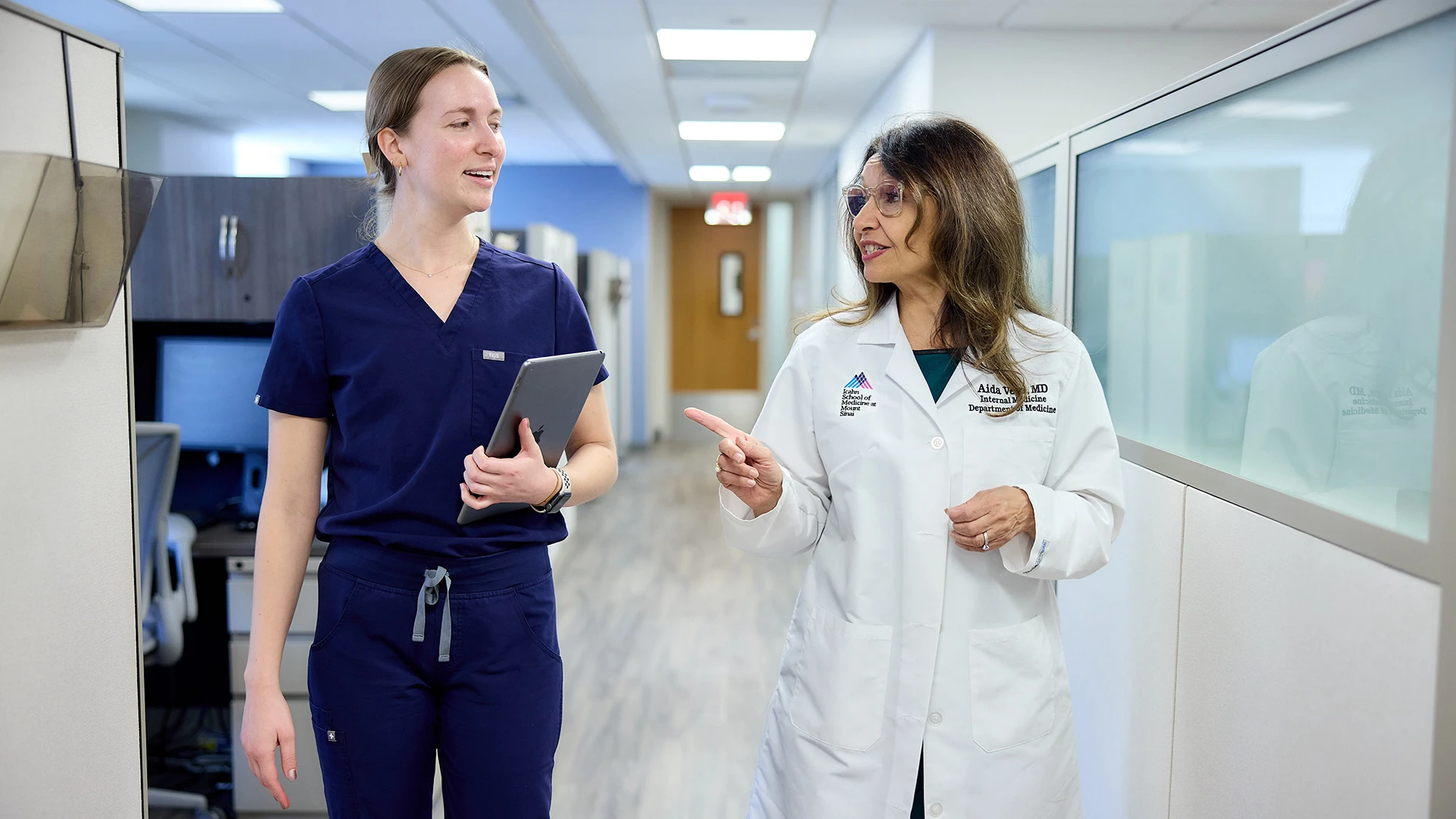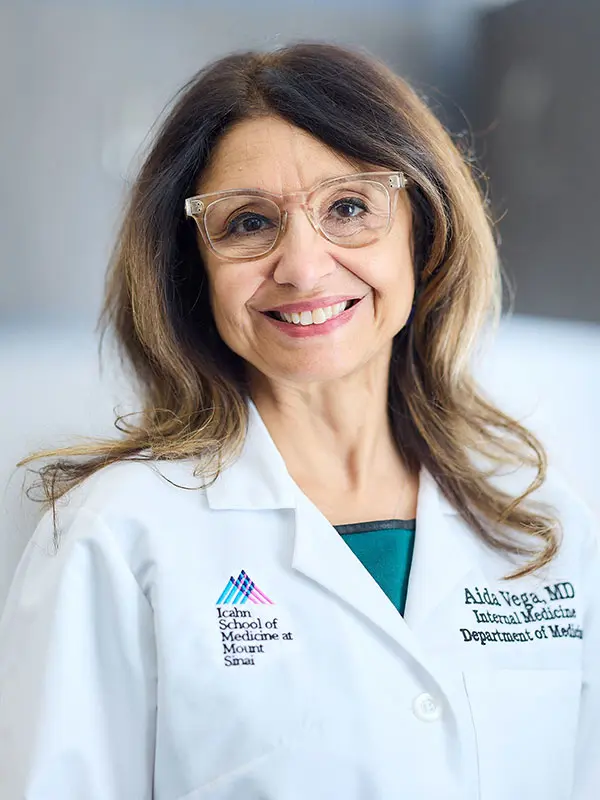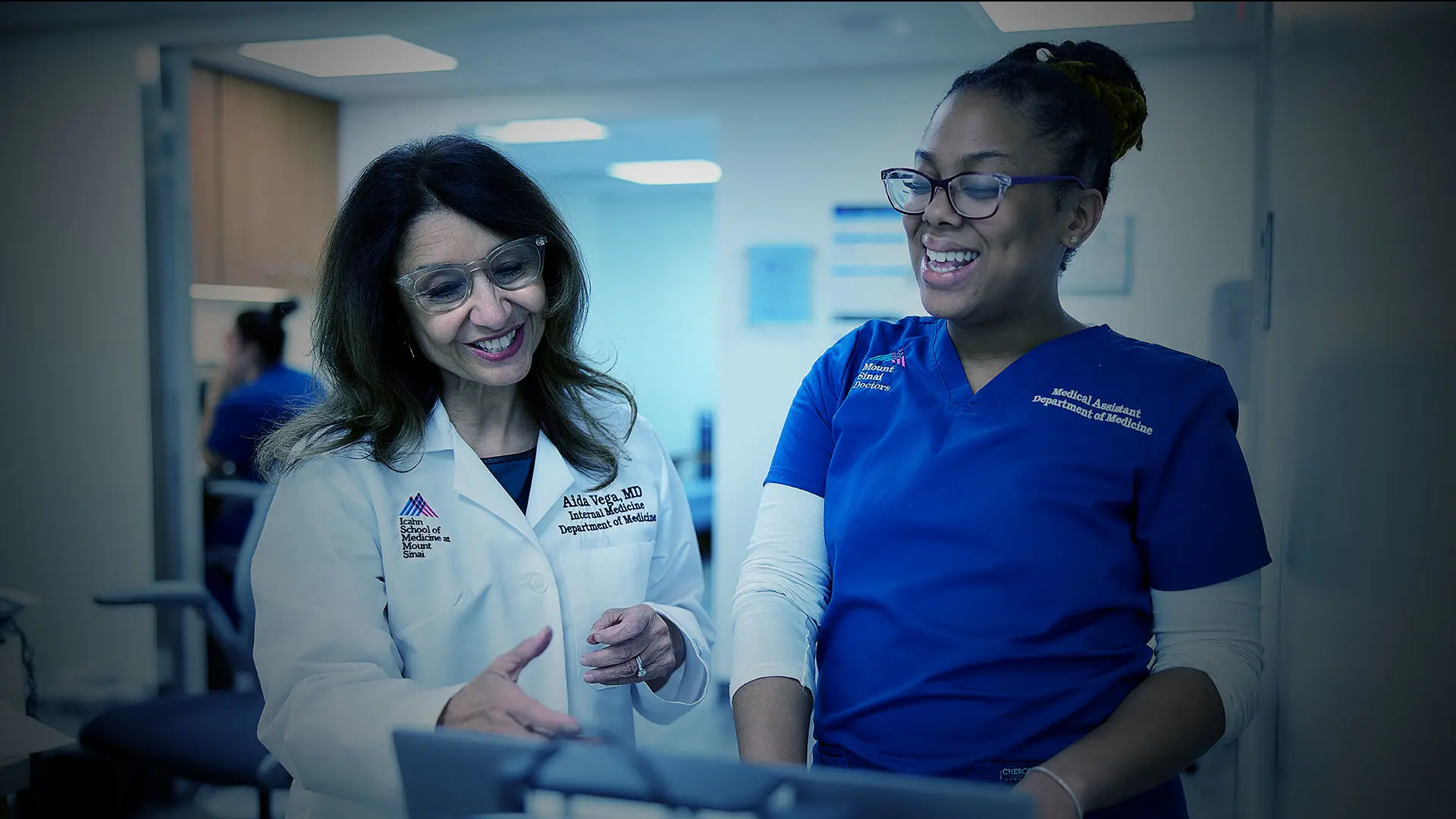As Mount Sinai Health System expands its ambulatory care footprint across New York City and beyond, it is working diligently to improve delivery of primary care and specialty services to patients in ways that address how, when, and where they need them.
Through video visits, for example, patients can speak directly to and coordinate their care among doctors in an extraordinary range of medical fields. Or they can make an outpatient appointment with a physician at a hospital-based office or stand-alone clinic or facility that’s close to their home.
“Ensuring that patients have timely access within seven days to just about any ambulatory service they need, from primary care to multispecialty, continues to be our top priority,” says Aida Vega, MD, Associate Professor of Medicine (General Internal Medicine) at the Icahn School of Medicine at Mount Sinai and Vice Chair for Ambulatory Care of the Department of Medicine. “We’re also improving the patient experience in terms of how they get their care, which is helping us to reduce visits to emergency rooms along with hospital admissions.”
The success of these efforts is reflected in the enormous increase in the volume of outpatient visits over the past few years. That has prompted a commensurate increase in the hiring of new physicians and their integration into Mount Sinai faculty practice offices, both at and beyond the eight hospitals of the Mount Sinai Health System. The latter includes the newly renovated Mount Sinai-Union Square site, which houses 30 medical practices—nearly a hospital in itself—at a convenient downtown Manhattan location.
That co-location of services constitutes another important way ambulatory care is improving access for patients. At several sites, including Union Square, Mount Sinai is interweaving psychology and primary care offices to facilitate coordination between both specialties. Similarly, the new Mount Sinai-Behavioral Health Center in lower Manhattan includes primary care to complement its mental illness and substance-use-disorder services.
“Around half, if not more, of the cases we see in primary care involve anxiety, depression, or other stress-related disorders,” says Dr. Vega. “So, we see co-location as a great way to foster collaboration between psychologists and primary care doctors in terms of prescribing medications and behavioral treatments, such as short-term interventions with cognitive therapy, which psychologists can enact.”

Miranda Veeser, NP, and Aida Vega, MD, on their way to see a patient
Enhanced access to care also means new initiatives aimed at hypertension and diabetes control across entire populations of patients. On the hypertension side, ambulatory doctors are a crucial part of Mount Sinai’s aggressive drive to identify and manage patients with higher-than-normal blood pressure, treating them and bringing them back to the office for follow-up checks until they are within nationally accepted guidelines. They are also playing a prominent role in reducing hemoglobin A1c levels of diabetic patients to below 9 percent by collaborating with nutritionists, diabetes educators, and endocrinologists to reinforce best practices in patients for managing their conditions.
For Dr. Vega, the flipside of enhanced patient access to services such as these is improving workflow within the system itself, thereby enabling doctors to commit their full time and attention to what they were trained to do: be excellent doctors. Nationwide, physicians are overwhelmed with the daily paperwork from their jobs and, more recently, with responding to the onrush of queries from patients over electronic portals. The Health System has launched an effort to address this challenge through more robust support at the practice level.
“We’re strengthening our team-based model through a huge effort this year to add advanced practice providers, particularly nurse practitioners and physician assistants, and to make sure every staff member is working at the top of their license,” notes Dr. Vega. As part of this wide-ranging workflow redesign, she adds, nurses and medical assistants are helping to screen and review patient calls and prioritize those that need a more timely response. And they’re working to ensure that test results are returned more quickly to patients.
“We’ve made tremendous gains over the past year in terms of productivity of our physicians and clinical staff and their responsiveness to patients,” reports Dr. Vega. “But we also realize we’re only halfway to our goal, and that we need to keep pushing hard to streamline our workflow at the same time we’re improving patient access to care.”
Featured

Aida Vega, MD
Associate Professor of Medicine (General Internal Medicine); Vice Chair for Ambulatory Care, Department of Medicine
